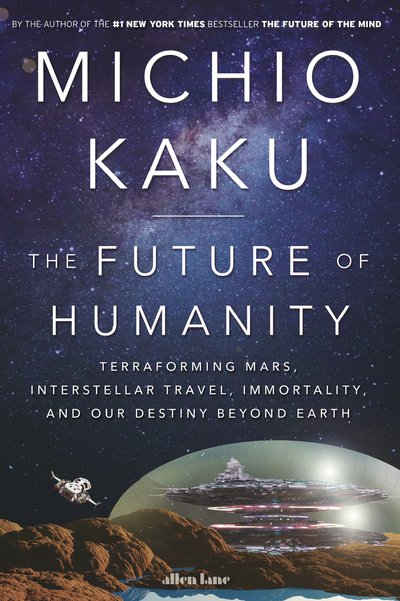Dr. Michio Kaku’s The Future of Humanity epitomizes everything that is at the essence of Exoplanet Earth, which is why it was selected to officially launch this endeavor. This post is the first of a four-part series that will hit the major ideas of the book. Dr. Kaku breaks up the book into four major parts:

- Prologue and Introduction
- Leaving the Earth
- Voyage to the Stars
- Life in the Universe
This first installment is a quick synopsis of the prologue and introduction and a discussion of its major points.
“If our long-term survival is at stake, we have a basic responsibility to our species to venture to other worlds”
-Carl Sagan
The prologue can be summed up in one word, survival. It is no secret that the human race has the odds severely against them. Scientist estimate that 99.9% of all species to ever inhabit the Earth has gone extinct. The most ambitious, riskiest gambler would have a hard time betting on those odds. In the past, the causes of extinction were purely natural. Various reasons for mass extinction range from massive volcanic eruptions, impacts from space bodies, and severe ice ages. Today, humanity not only faces natural disasters, but manmade threats from “climate change, nuclear war, weaponized microbes, and an expanding population”1. Even if we were to survive all of this, one day the Sun is going to grow large enough to engulf our orbit. As Carl Sagan said, “we need an insurance policy”1. Humanity has no choice, either expand beyond Earth and our solar system or go the way of the dodo bird. While the prologue is dark and bleak, the introduction is optimistic and enthusiastic.
The introduction is broken up into three sections. First, Dr. Kaku discusses the recent discoveries of orbiting bodies beyond our solar system, exoplanets. Since the first discovery in 1992, thousands of exoplanets have been discovered. Unfortunately, many of these exoplanets are not inhabitable, but recent developments have given humanity hope. Earth-sized planets have been detected in the “Goldilocks” zone of many stars meaning that they have the potential to have liquid water. Simple calculations deduce that there is a potential for two billion trillion Earth-size planets in the VISIBLE universe1. This leads to the ultimate question of is their life in the universe, but that will be left to a later discussion. Next, Dr. Kaku points out the new “golden age” of space exploration.
For the first time in human history, private companies are tackling the challenge of space exploration with great success. Elon Musk and SpaceX can return rocket boosters back to Earth, which can dramatically decrease launch cost. Other like Jeff Bezos and Richard Branson are also in the pursuit of space access. Private money is pouring into the space industry, which can lead to an exponential boom in space exploration. Lastly, the author goes into detail about the revolutionary waves of technology emerging. The big exponential technologies are genetic engineering, nanotechnology, and robotics to name a few. These, in particular, will have huge impacts on our ability to explore the universe. To survive in space and on other planets, it will be necessary to modify our biology to meet the different conditions the human body will be subjected to. Nanotechnology will provide stronger and lighter materials for space structures as well as provide technology for optimal human performance. Robots will be pivotal for space exploration. They will augment humans and will be able to work around the clock. Robots will be able to do more dangerous task that would typically be too risky for humans.
The introduction wraps up with a brief summation of the next sections of the book and with a message of hope. For the first time in history, science fiction is beginning to merge with our reality, and we are about to embark on our ultimate destiny of becoming a multi-planet species.
Stay alert for part 2 of this series where we will discuss the steps necessary to conquer our own solar system.
1Kaku, Michio. The Future of Humanity: Terraforming Mars, Interstellar Travel, Immortality and Our Destiny beyond Earth. Penguin Books, 2019.
Disclaimer: Exoplanet Earth receives compensation for products that are linked on this page. 10% of all revenue from this site will go to the Planetary Society!
